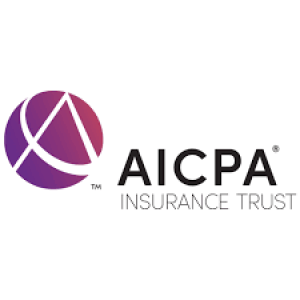AICPA Life Insurance Review
- At May 29, 2019
- By Miles Mason
- In Recommended Reading
 0
0

AICPA Life Insurance Review
Among the member benefits provided by the American Institute of Certified Public Accountants (AICPA) are life, auto, and homeowner insurance. The life insurance is generally available to members and spouses. Up to $2.5 million in coverage is available.
The life insurance plans are offered through AICPA Insurance Trust and written by Prudential. According to website nerdwallet.com, Prudential is rated A+ (Superior) for financial strength by A.M. Best. That site also notes that Prudential draws fewer than the median number of complaints to state regulators, as compared to other life insurers.
AICPA offers three life insurance plans. The basic plan, CPA Life, features a lower initial rate, with the cost increasing as the insured ages. This policy is available to members up to age 74. The policy may be renewed until age 80. This would typically be the choice for someone believing that their income will increase over time.
AICPA also offers the LPT (level payment term). This product starts with a larger payment up front, but with premiums guaranteed at a certain amount over a defined period. LPT is available to members up to age 65. It is offered with an initial term of either 10 or 20 years. At the conclusion of that term, the rate increases annually until age 95. This type of coverage would be ideal for someone who believed that they would not need coverage after the initial term. The LPT coverage requires a medical exam, which AICPA describes as an in-home exam.
The final product offered, GVUL (Group Variable Universal Life) includes investment features. GVUL is available to members up to age 74, and coverage may remain in effect until age 100. Like the CPA Life plan, it offers a lower initial rate, with rates increasing with age. The GVUL policy includes an accelerated benefits option for terminally ill participants with a life expectance of less than six months to receive part of the death benefit during their lifetime. AICPA offers an online tool comparing the three policies.
One feature of all AICPA life insurance policies is the annual cash refund. On an annual basis, all premiums not used for claims and expenses are distributed as a cash refund to plan participants. The distribution, while not guaranteed, has been made every year since the program’s inception. In 2008, over $124 million was refunded to over 82,500 members, an average refund of about $1500 per member.

AICPA Life Insurance Review
A 50-year-old man purchasing $1,000,000 coverage under the CPA Life plan would pay between $112 and $290 per month in premiums. The standard rate is $290 per month, which would be reduced to $150 if the insured qualified for the “select rate” or to $112 if the insured qualified for the “preferred rate. The preferred rate requires a medical exam. Qualification for the select rate depends on the answers to health questions on the application.
A female spouse of a member age 45 would pay $132 per month for the standard rate, or $64 per month at the select rate.
These are the gross monthly premiums. Historically, the annual cash refund results in a refund of approximately 40% of these amounts.
One reviewer (who admittedly sells life insurance for competing companies) points out that collecting a higher than necessary premium and then issuing an annual refund is an inefficient process. He cites rates from competitors that are, indeed, lower than AICPA. However, since AICPA refunds are typically about 40%, the net cost for the AICPA policy is still somewhat lower than the competing rates he cites.
One potential issue to keep in mind before selecting coverage through AICPA is that the coverage does require continued membership in the AICPA (or in some cases, a state association). In other words, you are required to keep paying your membership dues as long as the policy is in effect. Since dues can be as high as $465 per year, this might be a consideration for some members.
For more discussion, see How to Buy Life Insurance.
Disclaimer: I am not a financial adviser. I do not endorse any products (other than my own books!) As of the date of this blog post, I am a member of both the AICPA and TSCPA. These are just some observations from my independent personal research. Do your own research. I hope this may help. This page will likely never be updated.









